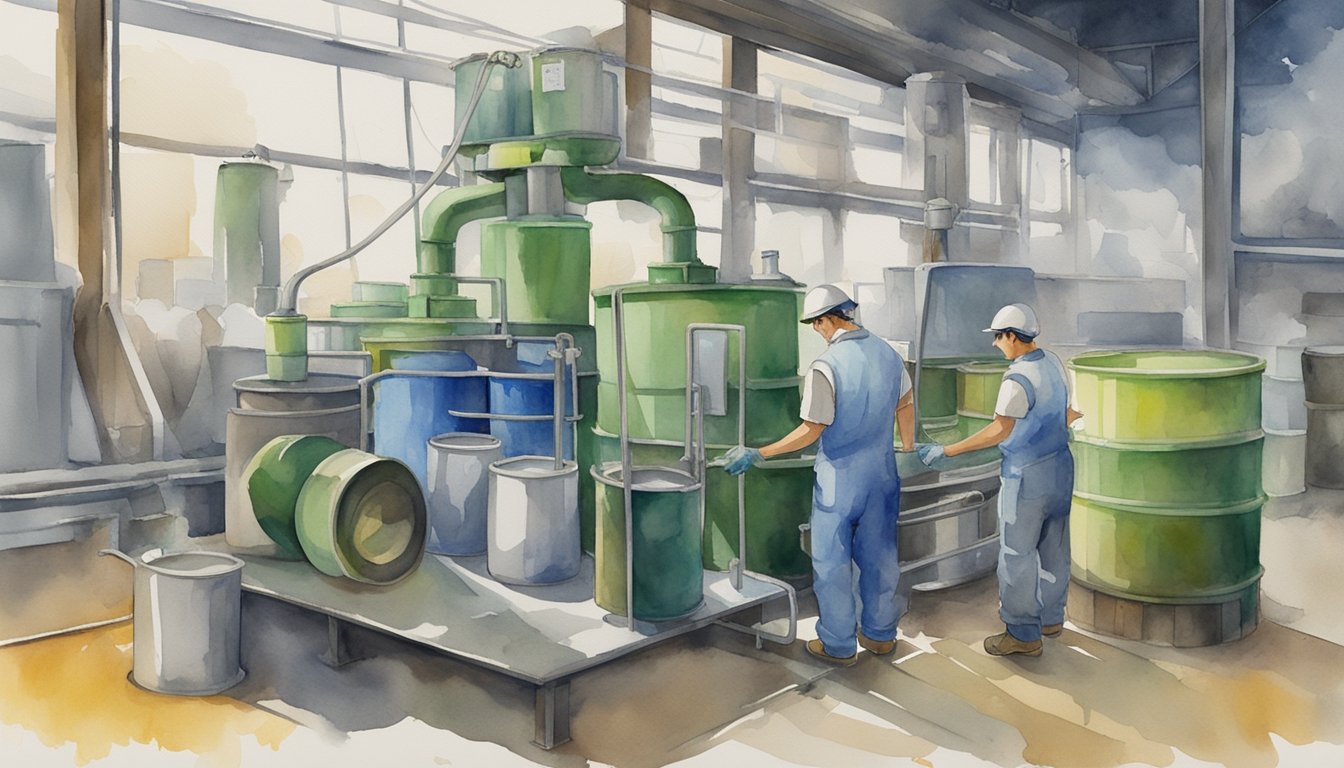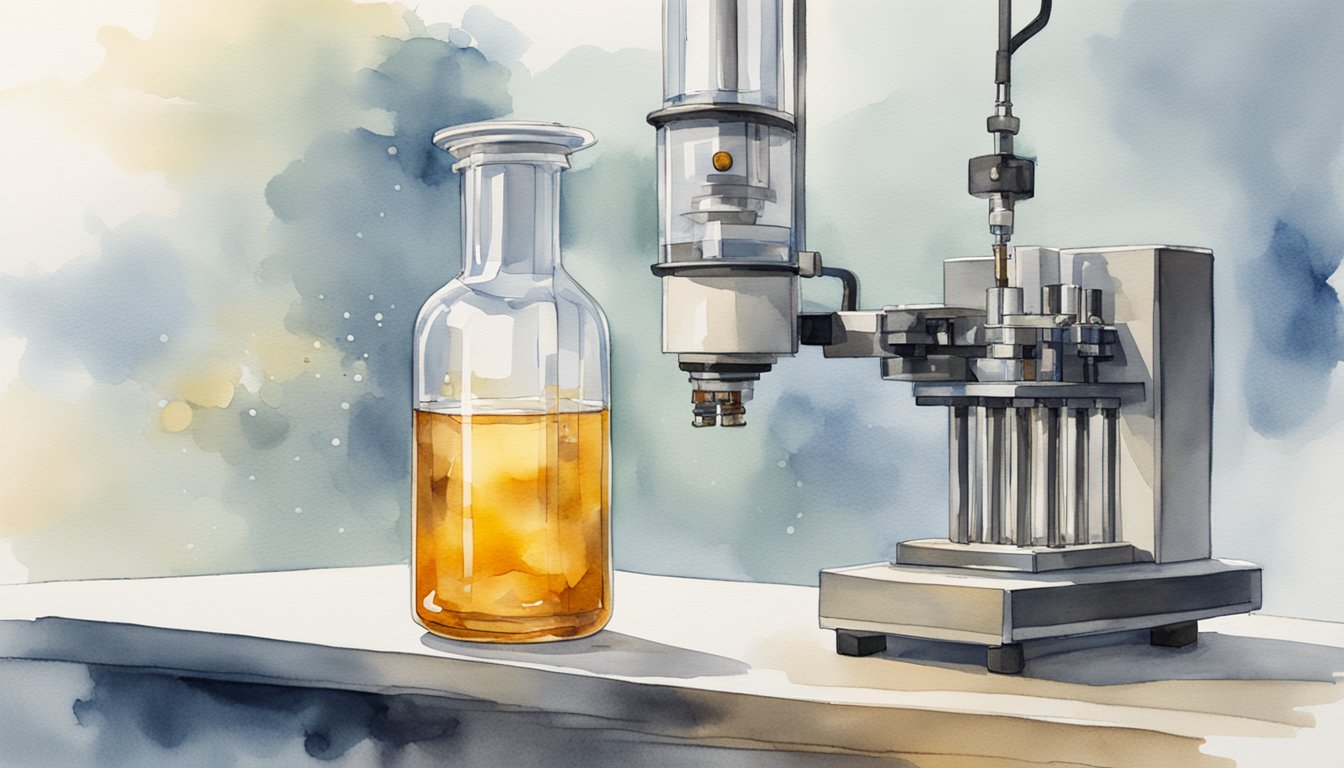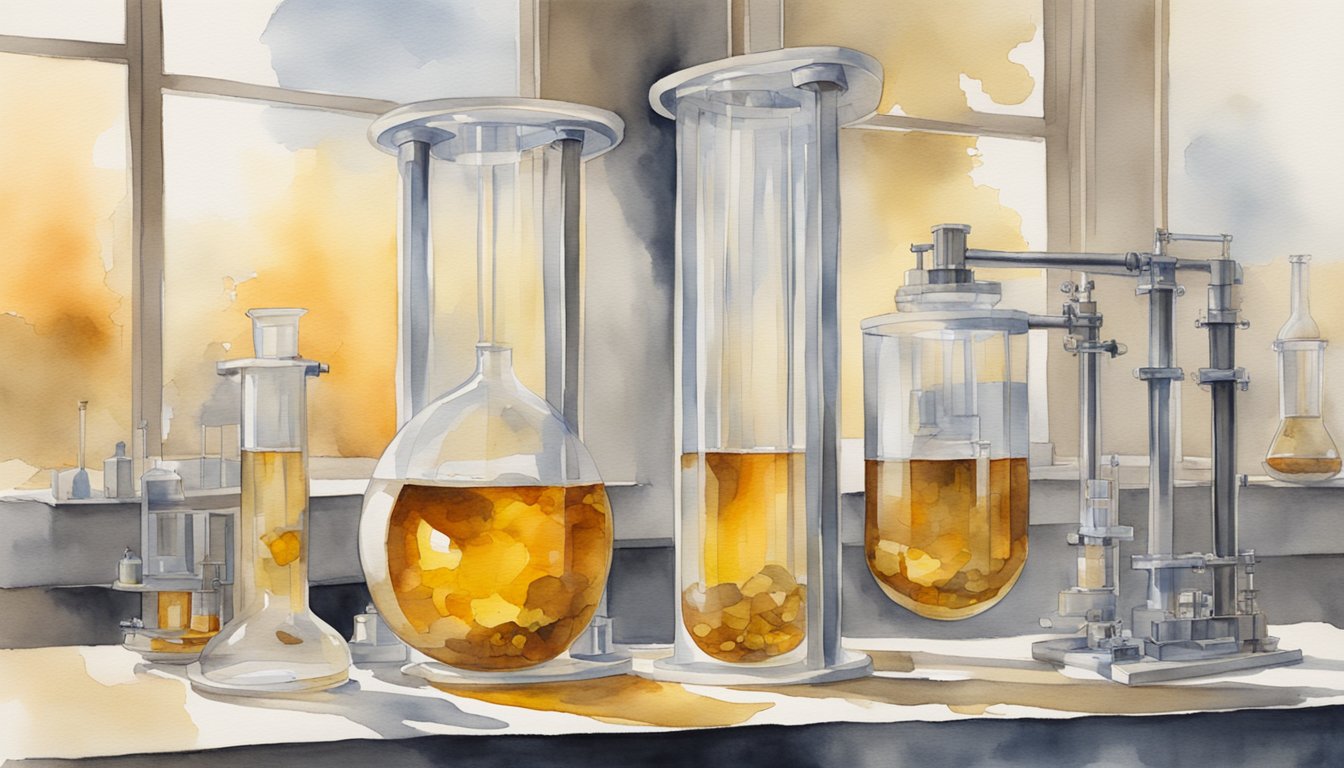Per- and polyfluoroalkyl substances (PFAS) are a group of synthetic chemicals found in everyday products like shampoo and cookware, but these compounds have unique properties that can pose threats to the environment and public health.
PFAS are characterized by their strong carbon-fluorine bonds, which gives them unique properties like water and oil repellency, heat resistance, and chemical stability. For these reasons, they are extremely persistent in nature, earning them the nickname "forever chemicals." They can contaminate water, soil and air, which has increased the demand for testing environmental samples.
PFAS include thousands of different compounds, so the EPA industry-standard for analysis has become liquid chromatography coupled with tandem mass spectrometry (LC-MS/MS) due to its high sensitivity and specificity that can detect PFAS at very low concentrations. EPA Method 537.1 is widely used for drinking water analysis, while modified versions are applied to other matrices.
Proper sampling techniques can establish accurate results for monitoring PFAS. Low-flow sampling methods are often preferred for groundwater to minimize disturbance and ensure representative results. As analytical capabilities improve, alternative methods are being developed to address a broader range of PFAS compounds and environmental matrices.
PFA Sources and Exposure
The persistence of PFAS in the human body adds to public health concerns, as these chemicals can accumulate over time. Ongoing research continues to uncover potential long-term health impacts, emphasizing the need for effective detection and removal methods. Health effects associated with PFAS exposure include:
-
Increased cholesterol levels
-
Changes in liver enzymes
-
Increased risk of certain cancers
-
Effects on the immune system
-
Thyroid hormone disruption
Exposure can occur through drinking contaminated water, consuming food with PFAS, or using products containing PFAS. Their sources often are a direct release from manufacturing facilities or the disposal of contaminated materials. PFAS can spread through different environmental media, making them difficult to contain and remove once released. Many stem from various industrial and consumer products, including:
-
Firefighting foams
-
Non-stick cookware
-
Water-resistant textiles
-
Food packaging
-
Industrial processes
Regulatory Criteria and Reporting
PFAS regulations focus on water safety and environmental protection. Regulatory bodies have established criteria for PFAS levels and reporting requirements, which is important for compliance and effective PFAS testing.
Water and Environmental Regulations
The EPA has set health advisory levels for PFAS in drinking water: for PFOA, the level is 0.004 parts per trillion (ppt), while for PFOS it's 0.02 ppt. These levels are significantly lower than previous standards. GenX chemicals have a final health advisory level of 10 ppt. PFBS has a higher limit at 2,000 ppt.
State regulations may vary and can be more stringent than federal guidelines, so it is best to check your local regulations for specific requirements.
Reporting and Compliance
Accurate PFAS test result reporting is necessary to meet regulatory standards. Method blanks are required for every batch of up to 20 field samples. Each analyte must be less than half the method reporting limit. Sample duplicates are recommended for every 20 field samples or fewer. This helps ensure data quality and reliability. When reporting to the method detection limit (MDL), you must qualify detections in the blank between the MDL and method reporting limit.
Regulatory Implications for Testing
Analytical methods for PFAS must meet increasingly stringent regulatory criteria. EPA Method 1633 and ASTM D7979 are commonly used for targeted PFAS testing, with minimum reporting levels around 1 part per billion.
For potable water, you need highly sensitive methods due to the extremely low health advisory levels. Your chosen method must be capable of detecting PFAS at these ultra-low concentrations in drinking water samples.
Non-targeted PFAS testing can identify unknown compounds using high-resolution LC/MS. However, this approach has limitations in quantification and sensitivity.
Analytical Methods for PFAS Detection
Analytical techniques must be sophisticated to reliably detect and measure PFAS. A range of proven and developing techniques allow accurate detection of these stable substances across diverse environmental samples.
EPA Methods and Standard Procedures
The EPA has developed standardized methods for PFAS analysis in different media. EPA Method 537.1 is widely used for testing drinking water and can detect 18 PFAS compounds at levels as low as parts per trillion. For air emissions, the EPA introduced the Other Test Method (OTM)-50; this method measures 30 volatile PFAS from stationary sources using passivated stainless-steel canisters.
ASTM D8421 and D8535 provide definitive procedures for analyzing PFAS in aqueous and solid samples respectively. These methods employ liquid chromatography/tandem mass spectrometry (LC/MS/MS) with optional isotope dilution to minimize matrix interference as mentioned in EPA 537.1.
High-Resolution Mass Spectrometry
High-resolution mass spectrometry (HRMS) offers high selectivity and sensitivity for PFAS detection. This technique can identify both known and unknown PFAS compounds in complex environmental samples. HRMS instruments like quadrupole time-of-flight (QTOF) or Orbitrap analyzers provide accurate mass measurements.
HRMS enables non-targeted analysis to discover novel PFAS. It can detect a broader range of compounds compared to traditional targeted methods. The high mass accuracy helps distinguish PFAS from interfering substances in challenging matrices like soil or wastewater.
Liquid Chromatography Techniques
Liquid chromatography-tandem mass spectrometry (LC-MS/MS) is the standard for PFAS analysis. This method separates PFAS compounds chromatographically before detection by mass spectrometry. LC-MS/MS can achieve ultra-low detection limits in the parts per trillion range. Other advantages include:
-
Multi-compound analysis in a single run
-
High specificity and sensitivity
-
Ability to quantify branched and linear PFAS isomers
Ultra-high performance liquid chromatography (UHPLC) achieves great separation efficiency by using smaller stationary-phase particles alongside increased pressure levels. This system provides high-resolution analysis at accelerated speeds and achieves better separation of closely eluting PFAS compounds under optimal conditions.
Refinements to liquid chromatography-tandem mass spectrometry techniques have lowered detection limits. Solid-phase extraction techniques have been optimized for different PFAS classes, allowing for more comprehensive analysis. Now it is possible to measure PFAS at parts per trillion levels in various environmental matrices.
PFAS Sampling Methods
Proper techniques for accurately testing PFAS minimize contamination risks and ensure representative results across various environmental media. PFAS sampling research focuses on developing standardized protocols to address the unique challenges of these persistent compounds. You should follow strict guidelines to prevent sample contamination:
-
Avoid using materials containing PFAS, such as Teflon-coated equipment or water-resistant clothing. Instead, opt for PFAS-free sampling gear and personal protective equipment.
-
Implement a field quality control program, including equipment blanks and field reagent blanks, to identify potential sources of contamination. This helps ensure the integrity of your samples and validates your results.
-
When collecting PFAS samples, use polypropylene or high-density polyethylene containers. Rinse these containers with PFAS-free water before use to remove any potential contaminants.
-
Store samples at temperatures below 10°C and analyze them within 14 days to maintain sample integrity. Avoid contact with aluminum foil, as it may contain PFAS.
-
Use low-flow sampling techniques for groundwater to minimize turbidity and ensure representative samples. This method reduces drawdown and purge volumes.
PFAS sampling encompasses various environmental media:
-
Drinking water: Collect samples directly from the tap after flushing the system.
-
Surface water: Use grab samples to capture specific moments or composite samples to evaluate conditions across time, location, or media mixtures, depending on the study objectives.
-
Groundwater: Employ low-flow sampling techniques or passive diffusion samplers.
-
Soil: Collect samples using stainless steel equipment and store them in HDPE containers.
-
Landfill leachate: Use specialized techniques depending on the complexity of the sample matrix.
Consider the potential impacts of runoff and stormwater conveyance systems when selecting sampling locations. This ensures you capture a comprehensive picture of PFAS distribution in the environment.
Data Quality and Results
PFAS analysis depends on reliable methods and strict data quality control. Accurate PFAS quantification in complex environmental matrices needs both low detection limits and minimized interferences.
Development of Analytical Methods
PFAS development methods focus on improving sensitivity, selectivity, and reliability. High-resolution mass spectrometry enables the identification of both known and unknown PFAS compounds. Liquid chromatography-tandem mass spectrometry (LC-MS/MS) is widely used for targeted PFAS analysis. Method development steps include:
-
Optimizing chromatographic separation
-
Refining ionization and fragmentation parameters
-
Validating calibration procedures
-
Determining method detection and quantitation limits
Ongoing research aims to expand the range of detectable PFAS and lower detection limits. Multi-laboratory validation studies help ensure methods produce consistent results across different labs and analysts.
Setting Data Quality Objectives
Data quality objectives (DQOs) must be well-defined to achieve effective PFAS analysis. DQOs establish the necessary quality standards for data that will help make project decisions. Key considerations for PFAS DQOs include:
-
Required detection and quantitation limits
-
Acceptable precision and accuracy
-
Sample preservation and holding times
-
Quality control sample frequency and criteria
Tailor DQOs to specific project needs and regulatory requirements. Clearly defined DQOs guide method selection, sampling procedures, and data evaluation.
Addressing Matrix Effects and Interferences
Complex sample matrices can interfere with PFAS analysis, leading to inaccurate results. Accurate results depend on effective management of matrix effects. Common approaches include:
-
Using isotopically labeled internal standards
-
Optimizing sample cleanup and extraction procedures
-
Applying matrix-matched calibration
-
Employing standard addition techniques
Researchers must thoroughly investigate possible interferences from co-eluting substances together with ionization suppression effects because both can lower signal intensity and impact detection sensitivity. Complex matrices such as biosolids and landfill leachate require specific method adjustments.
Rigorous quality control measures help identify and mitigate matrix effects. These include analyzing method blanks, matrix spikes, and certified reference materials.
Advancements in PFAS Testing
New analytical methods are pushing the boundaries of PFAS detection. High-resolution mass spectrometry now allows you to identify previously unknown PFAS compounds with remarkable accuracy.
Nano-materials and biosensors offer rapid, on-site testing options. These tools can detect PFAS in water samples within minutes, providing real-time data for immediate decision-making.
Advanced software algorithms boost the interpretation of data which allows for more efficient processing of complex PFAS mixtures. The identification of PFAS analogs and their transformation products is advancing through the application of machine learning techniques.
Non-targeted screening methods are gaining traction for PFAS analysis. These approaches allow you to identify a broader range of PFAS compounds without pre-selecting target analytes.
Total organic fluorine (TOF) analysis provides a cost-effective way to estimate total PFAS content. While not compound-specific, TOF offers a useful screening tool for contaminated sites.
Passive sampling techniques are being validated for long-term PFAS monitoring. These methods can capture time-weighted average concentrations, giving you a more comprehensive picture of PFAS exposure over time.
References:
[1] Allen, D., & McWhinney, B. (2019). Quadrupole Time-of-Flight Mass Spectrometry: A paradigm shift in toxicology screening applications. Clinical Biochemist Reviews, 40(3), 135–146.
[2] Andrzejczyk, N. & Federal Remediation Technologies Roundtable. (2023). Best Practices for PFAS sampling and data Evaluation. In Federal Remediation Technologies Roundtable 2023 Fall General Meeting [Presentation]. https://www.frtr.gov/pdf/meetings/nov2023/presentations/andrzejczyk-presentation.pdf
[3] Drinking Water Health advisories for GenX Chemicals and PFBS | US EPA. (2024, April 26). US EPA. https://www.epa.gov/sdwa/drinking-water-health-advisories-genx-chemicals-and-pfbs
[4] Heaphy, T. (2025, March 13). PFAS Total Organic Fluorine (TOF) testing. Eurofins Sustainability Services. https://sustainabilityservices.eurofins.com/services/pfas-total-organic-fluorine-testing/
[5] Massachusetts Department of Environmental Protection - Drinking Water Program. (2020). Per- and Polyfluoroalkyl Substances (PFAS) report. https://www.southwickma.org/sites/g/files/vyhlif1241/f/uploads/how_to_interpret_pfas_report.pdf
[6] Occhialini, J., Alpha Analytical, A Pace Analytical Services Laboratory, & Narragansett Bay Commission. (n.d.). PFAS testing Methods / Guidance. https://www.newea.org/wp-content/uploads/2023/05/NEWEA_Lab23_JOcchialini.pdf
[7] PFAS Analytical Methods Development and Sampling Research | US EPA. (2024, December 11). US EPA. https://www.epa.gov/water-research/pfas-analytical-methods-development-and-sampling-research
[8] Sampling precautions and laboratory analytical methods for per- and polyfluoroalkyl substances (PFAS). (n.d.). https://pfas-1.itrcweb.org/wp-content/uploads/2023/10/Sampling_and_Lab_PFAS_Fact-Sheet_Sept2023_final.pdf
[9] Scientific, C. (2024, October 22). Top analytical techniques for detecting PFAS in water and soil - Conquer Scientific. Conquer Scientific. https://conquerscientific.com/top-analytical-techniques-for-detecting-pfas-in-water-and-soil/
[10] Standard Test Method for Determination of Per- and Polyfluoroalkyl Substances (PFAS) in Aqueous Matrices by Co-solvation followed by Liquid Chromatography Tandem Mass Spectrometry (LC/MS/MS). (n.d.). https://www.astm.org/d8421-22.html













